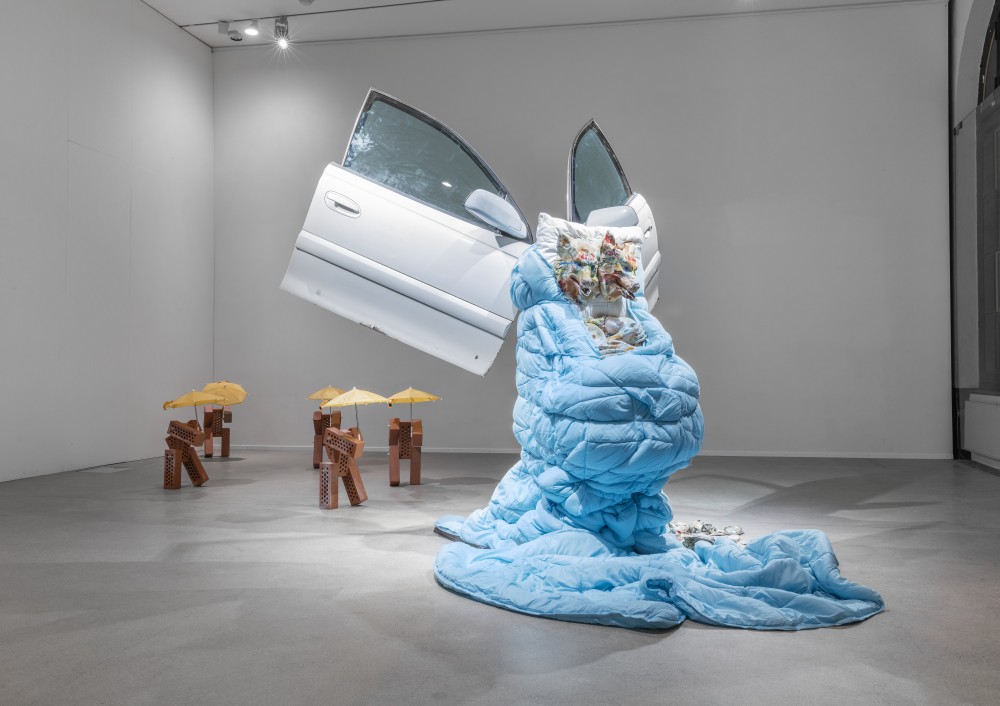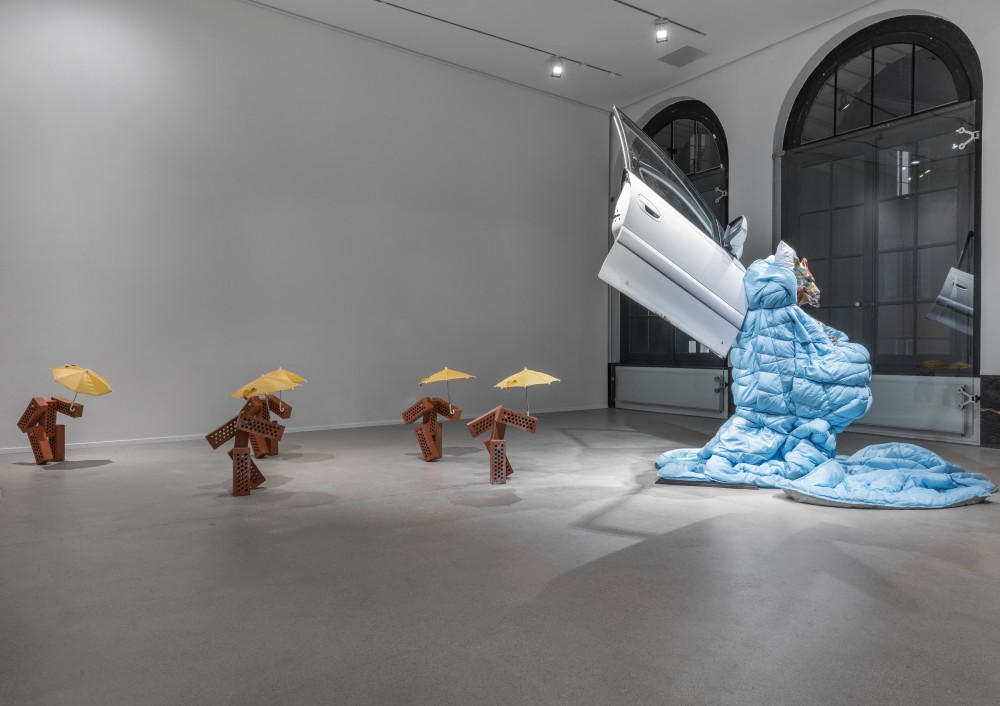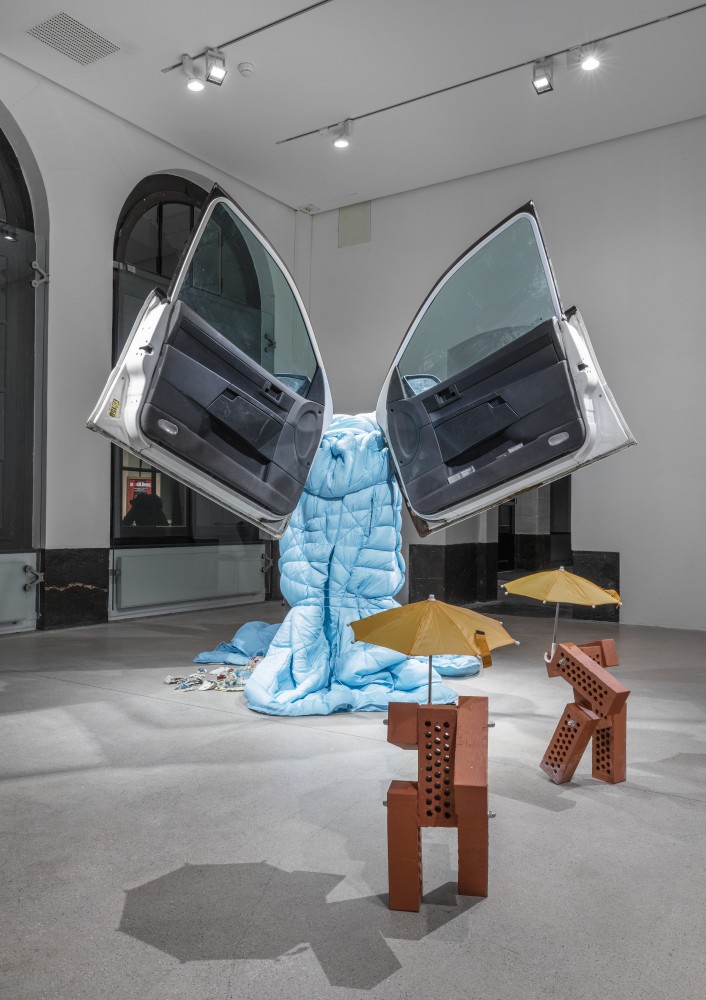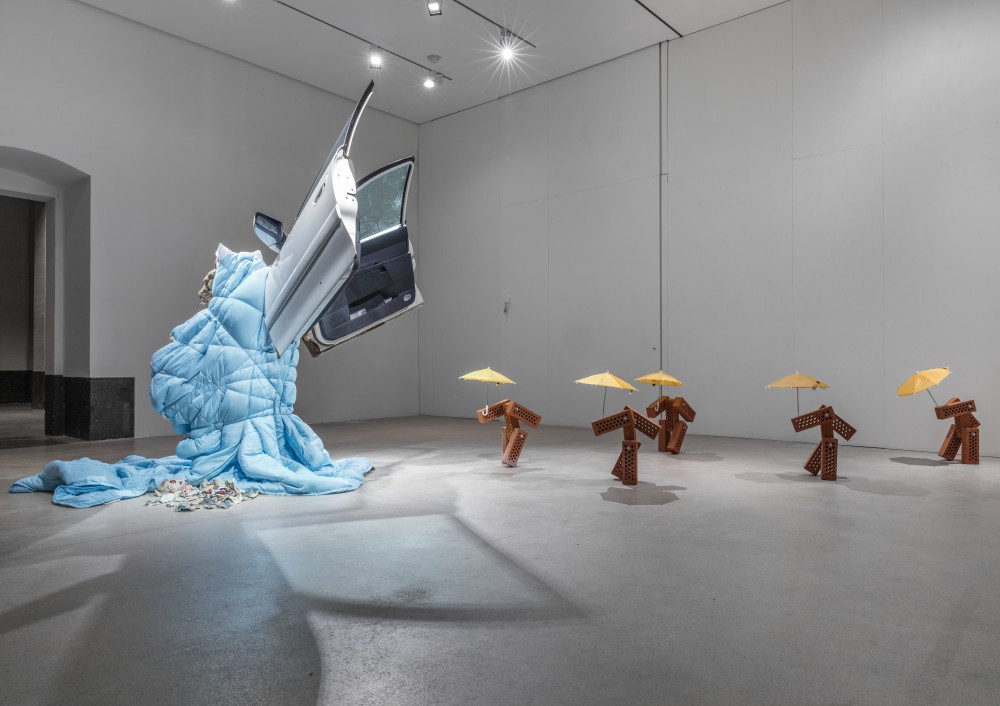Metamorphosis, Galerie Guido W. Baudach, Berlin
-selected works
View: ,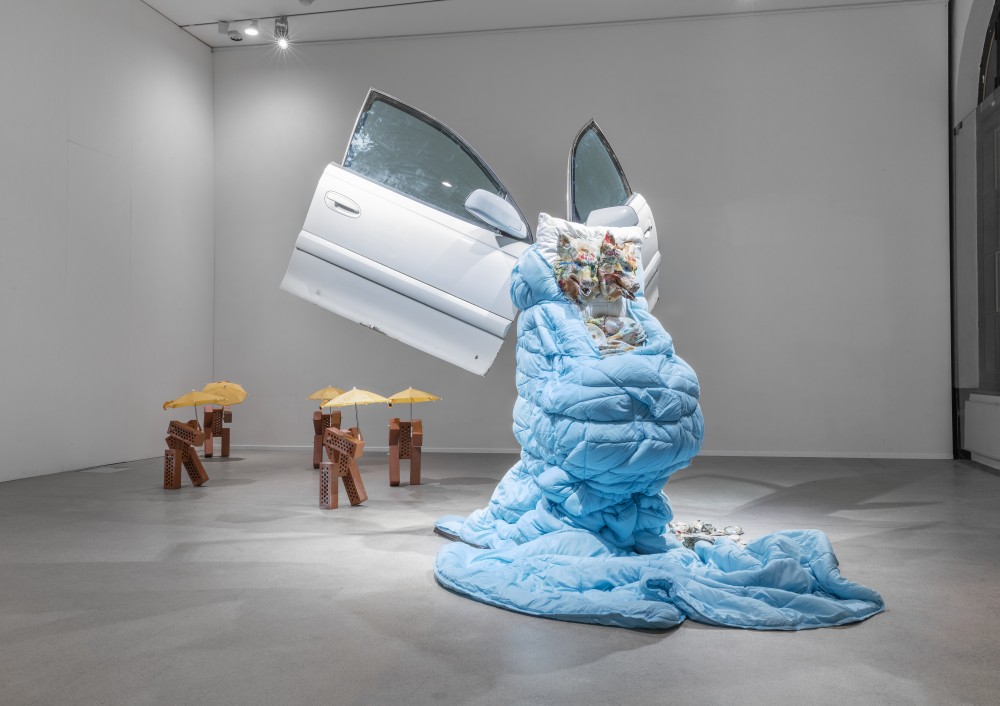
'Car2Go'
metal construction, glass, plastic, bricks, blankets, ceramics, textiles, dimensions variable 2016
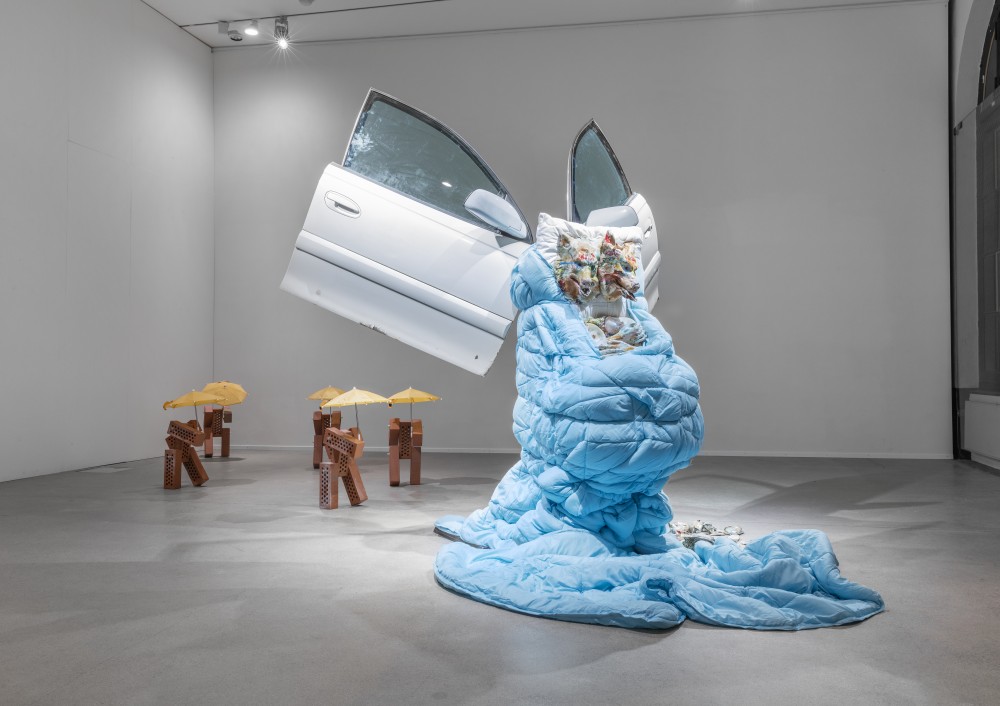
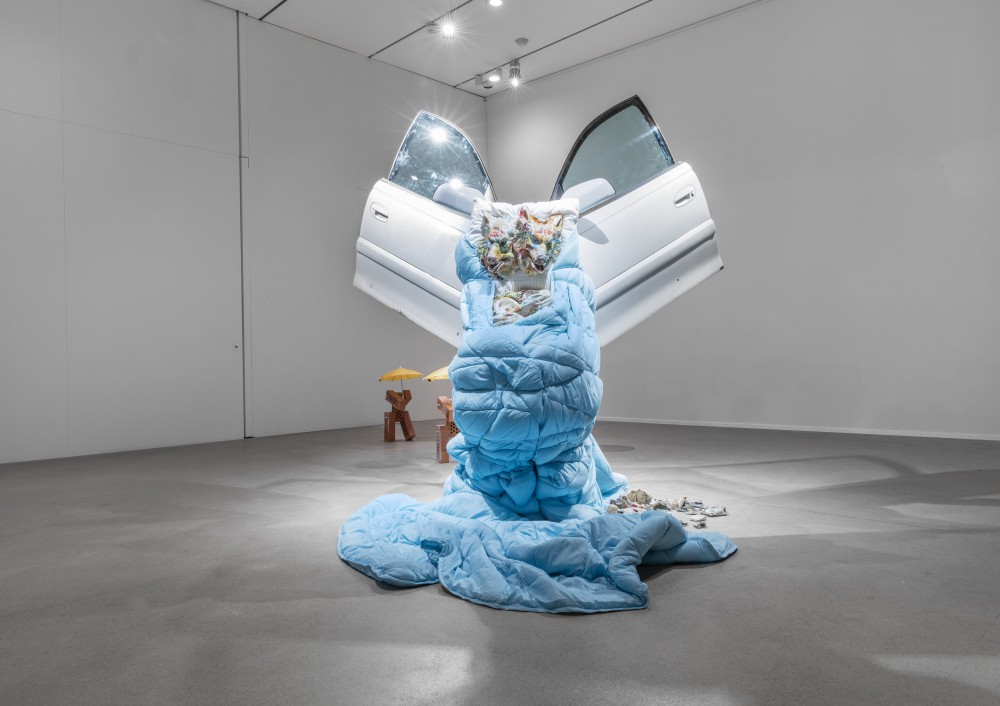
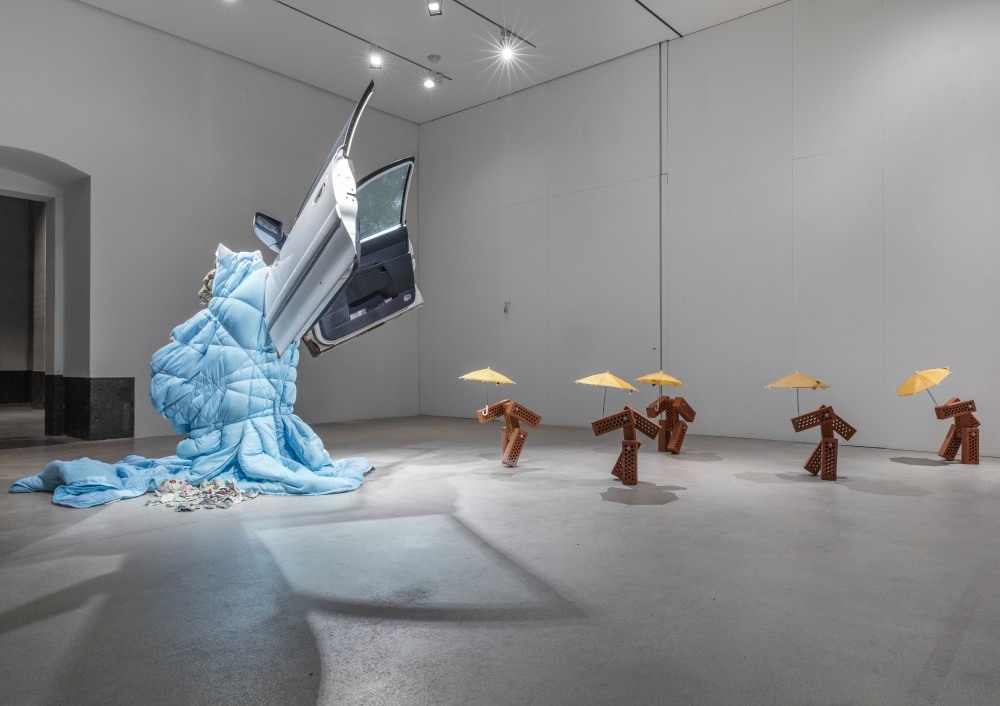
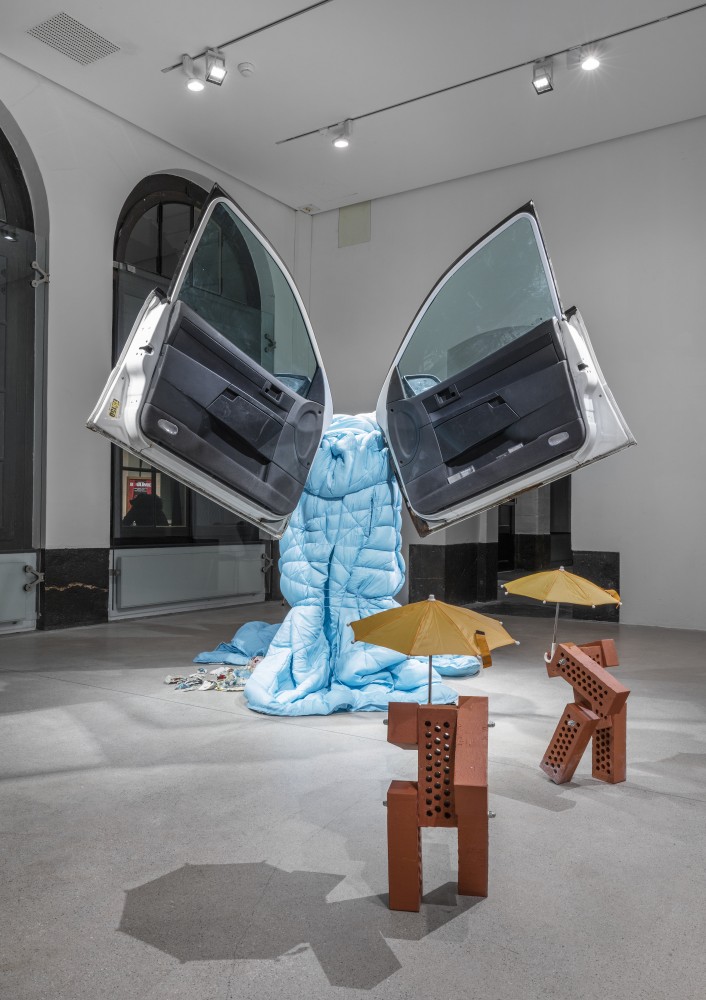
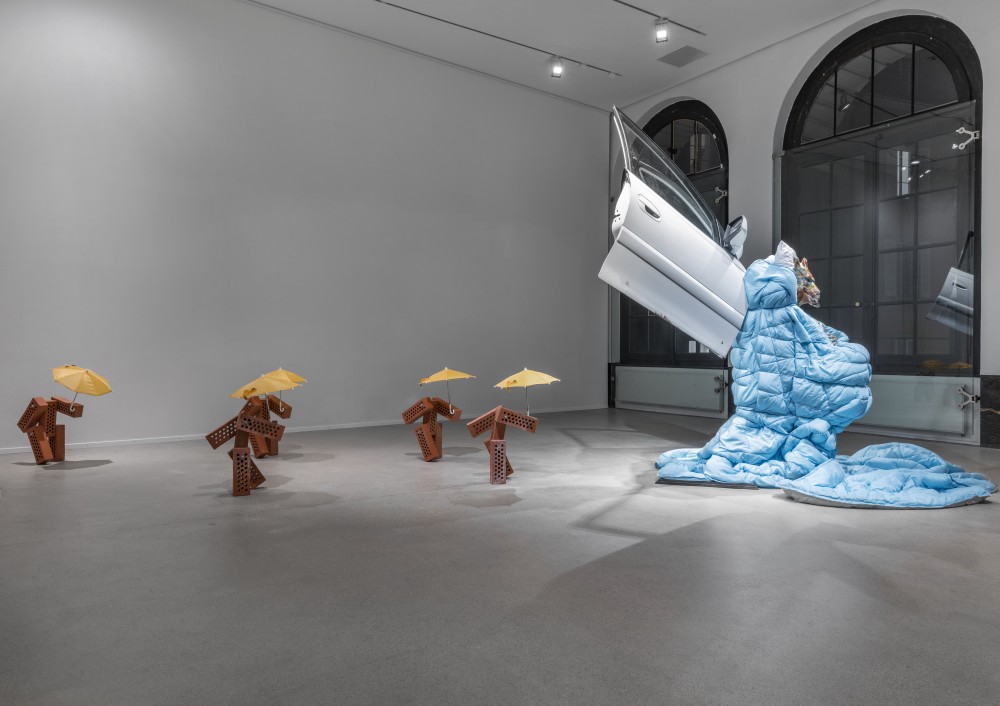
installation views
View: ,The term „metamorphosis“ comes from ancient Greek and means transformation, mutation, transfiguration. In the field of biology, it describes the controversial, multi-stage development of certain living beings such as frogs or butterflies, developing from a larva to a fully-formed creature. In the process of transformation, the initial gestalt morphs into a completely new identity.
In his long narrative poem Metamorphoses, completed around the year 8 AD, Roman poet Ovid tells of the transformations of gods, heroes, humans, plants and animals. Ovid’s guiding theme is the idea of an essential transition from one state to another; his poetry transforms ancient myths into epic scenes, such as that of the nymph Daphne transforming into a laurel tree in order to escape the god Apollo, who was aggressively pursuing her. Ovid sees the human existence as determined by the consequence of mutual, interdependent entanglements between all living creatures and the gods – a poetic fiction of an all-encompassing cosmic order.
The term „metamorphosis“ was reborn in the context of Surrealism. In keeping with the Comte de Lautréamont’s famous musings on how “the chance encounter of a sewing machine and an umbrella on an operating table” can stir up unexpected affect and visions in the viewer, the Surrealists wanted to destroy the usual interrelations through juxtaposing things that are alien to each other’s nature in order to free our unconscious and hitherto unknown levels of imagination. The purpose of the resulting images, suddenly laden with new unexpected contents, was to counter and subvert the seemingly logical structures of the usual ways of „seeing“ and to offer a surreal, clairvoyant mode of perception instead.
In his Second Surrealist Manifesto, written in 1930, André Breton declared: „May the devil keep the surrealist project from ever wanting to forego metamorphoses.“
The artists in the group exhibition Metamorphosis are not really concerned with the relations between the mythical and the secular nor with the surrealistic irreconcilability between consciousness and the unconscious. In their works however each of them deals in their own individual way with transformations of forms, materials, bodies, ideas and substances. The focus of the exhibition’s curation lies on the three-dimensional works by the participating artists, which highlights the specific role of transfiguration as a creative principle in each individual work. The selection comprises five contemporary positions from five European countries.
The Estonian artist Kris Lemsalu (born 1985 in Tallinn) is a ceramist and primarily works with media installation and performance. In a performance she staged at Frieze New York 2015, she spent several hours lying on her stomach under a huge ceramic turtle shell, with only her naked feet, hands and a shock of hair visible – a manifesto of solitude, isolation and repression of the individual in today‘s society, and especially the commercial art word. The sculpture exhibited at Galerie Baudach, titled Car2Go (2016), is a complex installation that comprises several parts. At first you read it as a kind of “angel“ figure, its metal wings made out of the two side doors of a car. Its „body“ is covered with a blue bedspread and in its upper middle section are two wolf heads made of ceramic, beneath which are two shapely nude female breasts held by two hands – a contrast that evokes religious as well as existential connotations. Nearby, small figures holding yellow umbrellas in the area are an indirect reference to the pro-democracy “Umbrella Movement“ in Hong Kong. A funeral procession in Sri Lanka that Kris Lemsalu witnessed in her travels also echoes in the installation. When Car2Go was first exhibited, the artist developed a performance around it, hugging the angel figure tightly and letting herself slowly slide down to its feet, in what would be a nod to a tragic gesture, reminiscent of Mary at the feet of Jesus on the cross, or a commentary on the current political situation.
Zdenek Felix, February 2017
